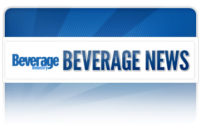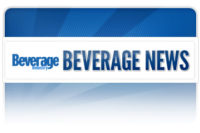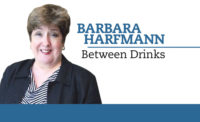Alcohol raises the bar in on-premise channels




Whether it’s the ambiance, celebrity sightings, exclusivity, cocktails or a combination of all of the above that attract consumers to nightclubs, it’s clear that the “cool factor” is a must-have for success. And one of the best ways to market a nightclub’s “cool factor” is via word-of-mouth, says David Henkes, vice president of Technomic Inc., Chicago. To do so, many operators are using guerilla marketing strategies such as boosting chatter on social media, which has become quite effective, he says. Online coupon sites such as Groupon and Living Social also can be used to attract consumers, though at smaller numbers than social media sites, says Adam Rogers, senior analyst for The Beverage Information Group, Norwalk, Conn.
Millennials are associated with social media most often, and they’re also responsible for much of the success in nightclubs, suggests Mike Ginley, partner with NextLevel Marketing, Westport, Conn. He points out that younger consumers weren’t affected as much by the economic downturn because most of them are renters, so the housing crisis didn’t affect them. As a result, they are able to spend a higher percentage of their disposable income on entertainment because they don’t have the large bills and responsibilities that consumers in their 30s and 40s have, he adds.
Within the on-premise segment, higher-end nightclubs, bars and even restaurants that cater to a slightly higher income group are performing the best, Technomic’s Henkes says.
The on-premise accounts that are struggling tend to be the smaller operations, such as a neighborhood pub, that service the middle-class or blue-collar clientele who were hit harder by the recession, Henkes adds.
For 2012, consumer spending in alcohol grew approximately 4.2 percent, driven primarily by spirits, which grew 6 percent; wine, which grew 4.5 percent; and beer, which grew 2.8 percent, Technomic’s Henkes says. Although the beer category showed positive dollar sales, volume was flat or slightly declining, he adds. Major domestic brands, while challenged, maintain the lion’s share of volume and sales in the beer category, but imported and craft beer are growing, according to Technomic.
“Overall, in the past year, beverages in on-premise accounts have turned the corner, making strides back to pre-recession levels,” The Beverage Information Group’s Rogers says. “The nightclubs and bars that are performing the best have created a niche for the consumers differentiating themselves from the competition by providing an experience unlike what they have seen in the past. Not all nightclubs and bars have grasped this concept, so although these channels are performing well, they are not seeing the same growth as dining establishments.”
While the on-premise channel was slowly rebounding from a five-year low, the consumer was changing, according to the Cheers On-Premise BARometer Handbook, published by The Beverage Information Group. The new consumer is well-versed in spirits, wine and beer, yet still demanding quality and value, it states.
“What consumers took away from the recession was the ability to get the most for their money, and how much they have to spend is directly relatable to the economy, be it higher taxes and/or gas prices,” Rogers says.
The recession also brought an increase of consumers drinking at home instead of going out. Although industry experts note that consumers are beginning to go out to eat and drink more often, retailers still create a challenge for on-premise operators. Thanks to recent legislative changes, many retailers are bringing an on-premise feel to the off-premise segment through formal tasting sessions led by a brewer, distiller and/or winemaker, Rogers says.
“These innovative retailers are creating an experience beyond the standard norm of grabbing your favorite beverage on the way home from work, and consumers are appreciating that,” he says.
Top trends
According to the National Restaurant Association’s (NRA) What’s Hot forecast, on-site barrel-aged drinks, food-liquor pairings and culinary cocktails will be the hottest trends on restaurant drink menus in 2013. The association surveyed nearly 200 professional bartenders who also are members of the United States Bartenders’ Guild. Other popular trends named in the survey include micro-distilled/artisan liquor, locally produced spirits, locally sourced produce, beer sommeliers, regional signature cocktails, beer-based cocktails and locally produced beer.
“Artisan products, local sourcing and culinary creativity are trendy on restaurant menus, and our new research shows that to also be true behind the bar,” said Hudson Riehle, senior vice president of research and knowledge for the NRA, in a statement. “Increasing recognition of mixology has elevated restaurant drink menus to a new level that allows bartenders to showcase their skills in blending textures and flavors similarly to how chefs approach food in the kitchen.”
Taking a more general look at adult beverage trends for 2013, Technomic says the Top 10 major developments will be: sweet wines such as Moscato and red blends that appeal particularly to millennials; extensive beer lists similar to wine lists found at upscale restaurants; continued growth of hard cider; unexpected flavors in the vodka and whiskey categories; in-store sampling and growler filling; quality mixers reflecting the premium spirits with which they’re combined; innovative dispensing systems such as keg wines and cocktails on tap; digital platforms such as tablets for drink lists and in-store shelf-talkers, quick-response codes and smartphone apps; beer gardens located indoors and outdoors; and whiskeys including flavored, single-barrel, rye and Irish whiskeys.
Corresponding with the trend toward sweet wines, Technomic’s Henkes notes that learning how to reach millennials is another significant trend.
NextLevel Marketing’s Ginley adds that low-calorie, good-for-you and fresh drinks also are popular trends. Fresh ingredients typically come into play in cocktails, but brewers are picking up on this trend as well. For example, The Boston Beer Co., Boston, started a program to ensure that its beer reaches on-premise accounts within weeks after it’s brewed. It also designed a Boston lager glass specifically for its beer, giving consumers a better drinking experience, Ginley explains.
When it comes to specific cocktail trends, The Beverage Information Group’s Cheers On-Premise BARometer Handbook suggests that the leading mixed drink for 2012 in nightclubs was the martini, followed by Jack Daniel’s and Coke, which surpassed rum and Coke, Rogers says.
Within restaurants and bars, sales of cocktails grew 1.9 percent in 2012 compared with 2011, according to GuestMetrics LLC, Leesburg, Va. Margaritas and mojitos experienced the largest category share gains in the channels, while cosmopolitans and martinis experienced the greatest share loss in 2012, the company notes. The flavors with the largest share gains across all cocktail types in 2012 were mango, tea, ginger, melon and cucumber, while the flavors that lost the most market share were apple, chocolate, pomegranate and banana, it adds.
“For restaurant and bar operators, it is critical to manage cocktail assortment and increase exposure to the fastest-growing cocktail types and flavors while reducing dependence on cocktail types and flavors which are falling out of favor,” said Brian Barrett, president of GuestMetrics, in a statement. “The success of a beverage alcohol program is one of the most important differences between those operators enjoying strong sales and traffic and those experiencing declining sales and profits.”
In the overall on-premise channel, Margarita still reigns supreme, says NextLevel Marketing’s Ginley. Martinis and mojitos also remain popular, he adds. BI
Looking for a reprint of this article?
From high-res PDFs to custom plaques, order your copy today!









